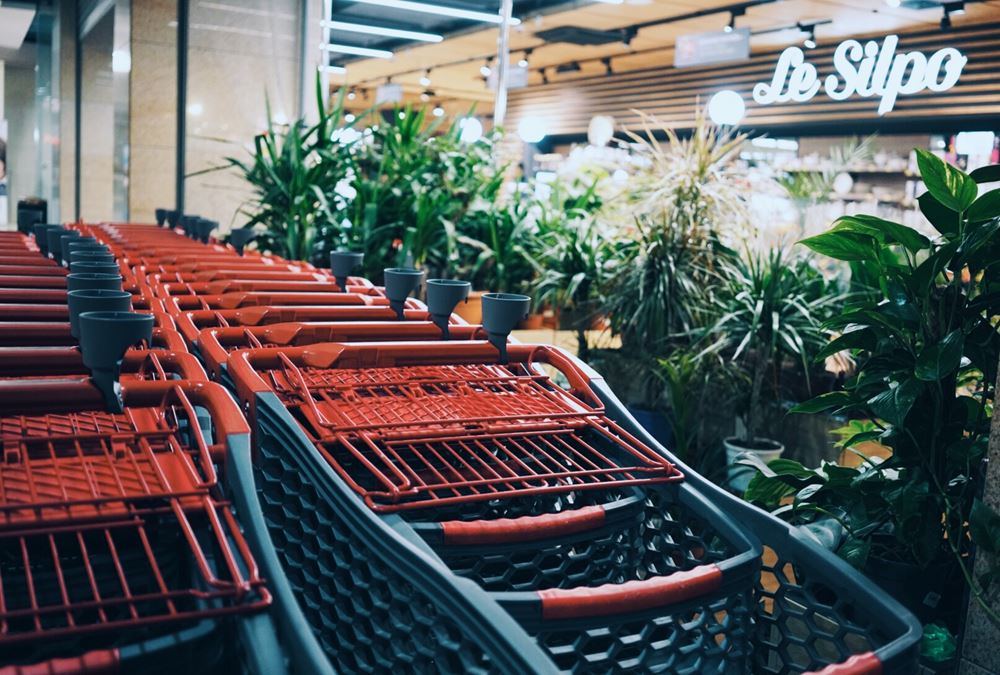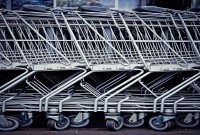- Home
- Business Processes
- Industry Knowledge
- Aerospace Industry
- Automotive Industry
- Banking Domain
- BFSI Industry
- Consumer/ FMCG Industry
- Chemicals Industry
- Engineering & Construction
- Energy Industry
- Education Domain
- Finance Domain
- Hospitality Domain
- Healthcare Industry
- Insurance Domain
- Retail Industry
- Travel and Tourism Domain
- Telecom Industry
- Leadership Skills
- eLearning
- Home
- Industry Knowledge
- Retail Industry
- Retail Industry Sectors: Types of Retail
Retail Industry Sectors: Types of Retail
A marketplace is a location where goods and services are exchanged. The traditional market square is a city square where traders set up stalls and buyers browse the merchandise. Now retail goods are generally sold in a number of different establishments. Convenience Stores, specialty stores, department stores, supermarkets & hypermarkets, discount stores, multichannel stores are some models used by the retail industry to provide goods to end customers.
Retail – Industry Sectors:
Retail goods are generally sold in a number of different establishments. Retailers can be classified by a retail store strategy mix, which is an integrated combination of hours, location, assortment, service, advertising, and prices, etc. Retail establishments typically classified into the following sectors:
- Convenience Stores
- Grocery Stores
- Specialty retailers
- Clothing Stores
- Auto Retailers
- Home furnishing retailers
- Drug Stores
- Department Stores
- Super Markets and Hyper Markets
- Discount Stores
- Multichannel Stores
- Direct Sales Catalog and mail order companies
- Some e-commerce businesses
Given below are the snapshot, definition, and major activities of various sub-sectors of the retail industry:
1. Convenience Stores:
Small stores that sell a variety of products, such as newspapers, magazines, candy, soft drinks, tobacco products, and lottery tickets. Convenience Store is generally a well situated, food-oriented store with a long operating house and a limited number of items. These stores are usually located in urban neighborhoods or along busy roads. Convenience stores are often open longer hours than other types of retail establishments, making them convenient for customers. However, prices are often higher than in other types of stores. Consumers use a convenience store; to fill in items such as bread, milk, eggs, and candy, etc.
2. Specialty Stores:
Specialty stores are the retail establishments that specialize in the selling of a single type or specific range of merchandise and related items. These establishments typically concentrate their efforts on selling a single type or very limited range of merchandise. They concentrate on the sale of a single line of products or services, such as Audio equipment, Jewelry, Beauty and Health Care, Clothing, Musical Instruments, Sewing Shops, and party supply stores. A typical specialty store gives attention to a particular category and provides a high level of service to the customers. Even the branded stores also come under this format. Consumers are not confronted with racks of unrelated merchandise.
Example: Music World for audio needs, Tanishq for jewelry and McDonalds, Pizza Hut, and Nirula's for food services.
3. Department Stores:
Department stores are large retail establishments that are made up of a number of sections, or departments. A specific group of products is available in each department, each of which specializes in selling a particular grouping of products. For example, under this compartmentalized arrangement, consumers go to one area of the store to purchase tableware and another area to acquire bedding. These typically are very large stores offering a huge assortment of "soft" and "hard goods; often bear a resemblance to a collection of specialty stores. A retailer of such stores carries a variety of categories and has a broad assortment at an average price. A department store usually sells a general line of apparel for the family, household linens, home furnishings, and appliances. They offer considerable customer service.
Example: Large format apparel department stores include Pantaloon, Ebony, Pyramid, Shoppers Stop, and Westside.
4. Supermarkets & Hypermarkets:
Supermarkets and hypermarkets are retail establishments that were primarily involved with selling food. Many supermarkets carry other household products as well.
Supermarkets are very similar to grocery stores, but they generally are larger and carry a wider selection of products. The supermarkets can be anywhere between 20,000 and 40,000 square feet (3,700 m2). A supermarket typically carries small house hold appliances, some apparel items, bakery, film developing, jams, pickles, books, audio/video CDs, etc.
A hypermarket is a large retail facility, or superstore, that carries a very wide variety of products under one roof, including groceries and a variety of non-food items. This is a self-service store consisting mainly of grocery and limited products on non-food items. Hyper Markets is a special kind of combination store that integrates an economy supermarket with a discount department store. A hypermarket generally has an ambiance which attracts the family as a whole.
These retail establishments, which were primarily involved in providing food to consumers, have increasingly ventured into other product areas in recent years. They account for the vast majority of total food-store sales in America.
Example: SPAR supermarket, In India, the Government-run Super bazaar, and Kendriya Bhandar in Delhi are good examples of a supermarket. Similarly in Mumbai, we have Apna Bazar and Sahakari Bhandar. Pantaloons Retail India Ltd. (PRIL) through its hypermarket "Big Bazar”.
5. Discount Stores:
Discount stores are stores that typically sell a broad range of products at lower prices than other retail establishments. However, they generally also offer lower levels of service than higher-priced retailers. These stores tend to offer a wide array of products and services, but they compete mainly on price. They offer an extensive assortment of merchandise at affordable and cut-rate prices. Normally retailers sell less fashion-oriented brands. These retail outlets offer consumers a trade-off: lower prices (typically on a broad range of products) in exchange for lower levels of service. Indeed, many discount stores operate under a basic ‘‘self-service’’ philosophy.
6. Multichannel Stores:
These are retail establishments that sell products to consumers through a variety of channels, including catalogs, mail order, telemarketing, the Internet, and vending machines. They are also known as mail-order businesses and other non-store retailing establishments. The customer can shop and order through the internet or mail or other mediums and the merchandise is dropped at the customer's doorstep.
Related Links
You May Also Like
-
Challenges in Consumer Goods Industry
There are tens of thousands of general consumer products manufacturers in the United States. They compete to develop the best products at the most affordable price for the greatest number of consumers. Challenges for these organizations include meeting the changing demands of customers, maneuvering through a consolidating market, and executing strategies to grow profitably.
-
Retail Industry Sectors: Types of Retail
A marketplace is a location where goods and services are exchanged. The traditional market square is a city square where traders set up stalls and buyers browse the merchandise. Now retail goods are generally sold in a number of different establishments. Convenience Stores, specialty stores, department stores, supermarkets & hypermarkets, discount stores, multichannel stores are some models used by the retail industry to provide goods to end customers.
-
Competitive Landscape of Retail Industry
In an increasingly competitive landscape, retail industry players must compete in a number of ways. In this article, we will learn about the competitive landscape of the retail industry. Learn the key players in the retail industry and their business profile. Learn more about the top 5 industry players. Competition is rough, especially for the small business. Knowing how business stacks up to the competition is important to your business strategy.
-
Retail Industry: Strategies for overcoming challenges
To stay competitive in this ever-evolving landscape, it is imperative for retailers to deliver a seamless customer experience and provide the right services and products at the right time. Learn the strategies for overcoming challenges for the retail industry. Retailers must use technology and solutions to revive their businesses in the COVID-19 world. An omnichannel marketing strategy can help retailers reach a wider audience for their brands.
-
All of us are consumers, from cradle to grave, to be more precise, from the womb to grave or cremation. In a sense, the history of the consumer is the history of mankind. Consumers are the largest economic group in any country. They are the central point of all of our economic activities. But the very same consumers ate the most voiceless group also. The nature of consumer in terms of needs, consumption patterns, and problems has been changing and evolving along with the social and economic development in the course of history.
-
Retail Industry: Key Performance Metrics
You cannot manage what you do not measure and cannot measure what you do not define. Learn the key performance metrics for the retail industry like Sales per square foot, Gross margins return on investment, Average transaction value, Customer retention, Conversion rate, Foot traffic, and digital traffic and Inventory turnover, etc. These metrics are used across the globe by key industry players to track and improve their performance.
-
Retail Industry – Drivers & Dynamics
To succeed in the retail sector, retailers must offer compelling value propositions and be responsive to market dynamics. The continued rise of e-commerce has altered the dynamics of the retail industry in such a way that has forced retailers to drastically reallocate their resources to multi-channel strategies. This article focuses on retail industry drivers and dynamics that provide the reader with a basic understanding of the factors that influence this trade. Understand the business drivers and dynamics of retail industry
-
Retail Industry - Business Model
A retail business model articulates how a retailer creates value for its customers and appropriates value from the markets. In retail, a business model would dictate the product and/or services offered by the retailer, the pricing policy that he adopts. Many different types of retail establishments exist, and, the overall industry has seen a significant blurring of the boundaries that separated the wide range of retail businesses. Understand the key business models adopted by the retail industry. Understand the distinctive ways that retail industry players use to reach to the end consumer.
-
Retail Industry: Revenue Model
Understand the traditional retail revenue model and, what are the variations in different revenue models adopted by key players in the retail industry. Analyze the pros and cons of various models. The most common and most profitable revenue model is that of the traditional retailer. The traditional retailer profits by selling products and services directly to buyers at a mark-up from the actual cost.
-
Business Dynamics of Consumer Industry
The consumer goods industry is impacted by many dynamics like economic considerations, product considerations, price considerations that impact consumer buying choices. Advertisements, branding, marketing, variety of goods, and technology are the main drivers. Manufactures, retailers, warehousing, and logistics are all part of the supply chain for the consumer goods industry.
Explore Our Free Training Articles or
Sign Up to Start With Our eLearning Courses

About Us
Learning
© 2023 TechnoFunc, All Rights Reserved









